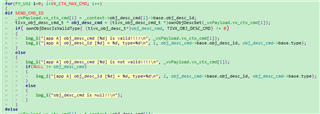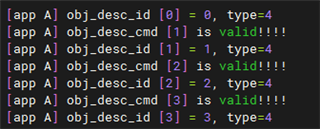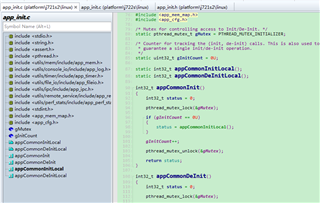Tool/software:
hi,ti team,
On SDK 8.4 (and 8.0), we have a usage scenario where tiovx is used on application A, and the obj_desc_cmd ->base.obj_desc_id and node information of the context are sent to application B. Based on this information, when application A encounters an exception, application B can obtain tivx_obj_desc_cmd_t through tivxObjDescGet (obj_desc_id), and then send IPC information to the corresponding Node through tivxObjDescSend to release tiovx resources and prepare for application A's reset.
After a series of modifications (mainly changing the interfaces like tivxObjDescGet to ownObjDescGet (obj_desc_i) with the prefix 'own'), this usage scenario was used in the SDK 9.2 environment, but it became ineffective. Currently, it is located that the tivx_obj_desc_cmd_t structure obtained through ownObjDescGet (obj_desc_i) is incorrect, and the most direct indication is that base.type is no longer TIVX_oBJ_deSC_CMD.
I would like to ask the following questions:
1. Can this usage scenario be adapted to the SDK 9.2 environment? How do I need to modify it?
2. If this scenario is not suitable for adapting to the SDK9.2 environment, is there any solution to enable application B to perform tiovx resource release operation after application A crashes abnormally?
Best Regards,
xftu
















